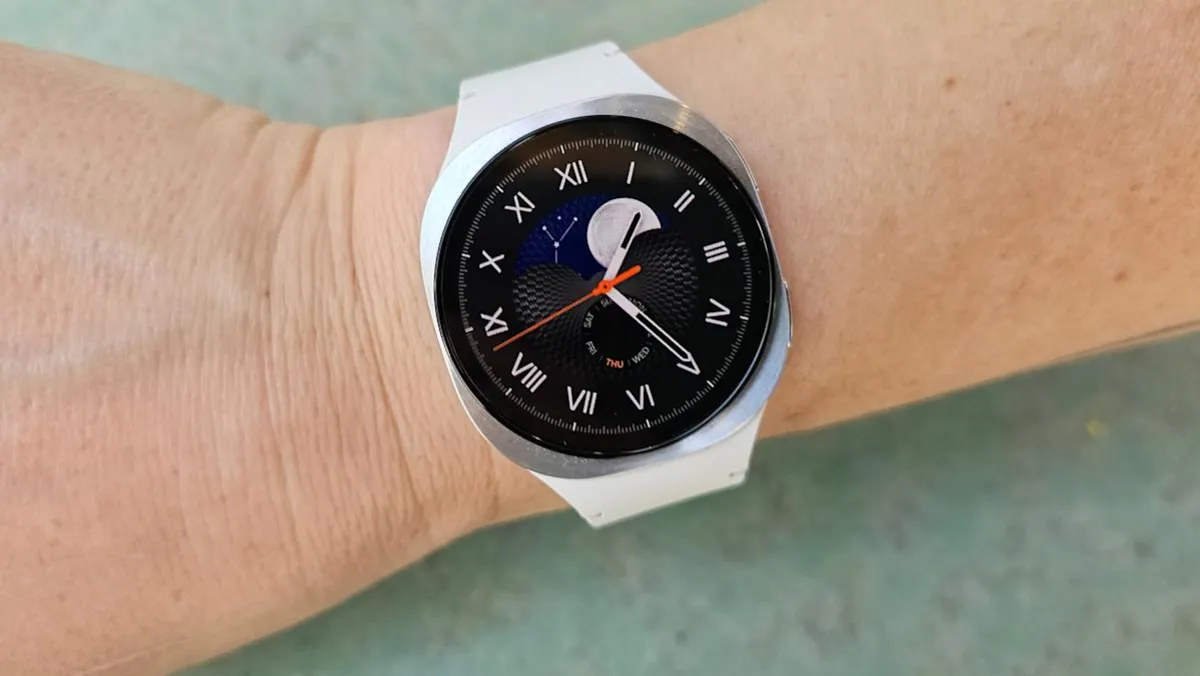
On July 9, Samsung showcased its latest innovations during the much-anticipated Galaxy Unpacked event, coinciding with Amazon’s Prime Day. This timing raises questions about whether major tech companies are aware of each other’s release schedules or if they intentionally complicate the lives of tech reporters. Regardless, after wrapping up my coverage of Amazon’s event, I finally had the chance to dive into testing Samsung’s new wearable, the Galaxy Watch 8. After four days of usage, I’ve gathered a wealth of initial impressions, overwhelmingly positive, that I’m eager to share.
The Galaxy Watch 8 retains the same processor and sensors as its predecessor but introduces a novel feature: the ability to measure antioxidant levels. To obtain a reading, users must remove the watch and hold their thumb on the sensor for five seconds, referencing the Health app on their phone for detailed results. My first reading yielded a score of 60, categorized as “low.” The Health app promptly suggested I consume a 100g persimmon, a fruit I hadn’t thought about since my grandmother’s famous holiday cookies. Given South Korea’s status as a leading persimmon producer, it’s fitting that my Samsung device would recommend this nutrient-rich fruit.
In pursuit of a better antioxidant score, I adopted a rigorous regimen, consuming cherries, dark chocolate, and half a cantaloupe at breakfast, alongside a plain green tea. Despite my efforts, my second test resulted in a two-point decrease. While I didn’t expect dramatic changes overnight, I had hoped for some improvement, prompting me to reconsider my breakfast choices.
One of the most noticeable upgrades in the Galaxy Watch 8 is its fresh design. Since its inception, the Galaxy Watch has maintained a consistent look, but this new model features a “cushion design” inspired by last year’s Ultra model. This design showcases a circular glass display atop an aluminum case that resembles a rounded square. The Sport band seamlessly curves to align with the case width, presenting a refined aesthetic compared to the bulkier prongs of previous models.
However, the raised glass display, while visually impressive, raises concerns about durability. The protruding glass makes it more susceptible to scratches and damage, which prompted me to order screen protectors. Unfortunately, I managed to crack one during testing. On the positive side, this design enhancement addresses a usability issue from the Galaxy Watch 7, allowing for more comfortable scrolling without finger interference.
The Galaxy Watch 8 is the first smartwatch to feature Google’s Wear OS 6, enhanced with Samsung’s One UI interface. A standout feature is the integration of the Gemini app, allowing users to perform many tasks directly from their wrist. While the AI assistant efficiently handled basic requests, some complex queries took slightly longer to process. I was pleasantly surprised by its ability to provide unique recommendations for local record stores and dining options.
Gemini’s functionality includes a text-to-speech option, but users must tap the screen to stop the audio if they prefer reading. Follow-up questions require either tapping the mic icon or saying “OK Google” again, which can disrupt the flow of conversation. Despite a few limitations, Gemini proved adept at handling specific tasks, such as sending texts or checking event dates.
Another intriguing feature of the Galaxy Watch 8 is its built-in, AI-powered running coach. This feature begins with a twelve-minute performance assessment, assigning a level from one to ten and creating a tailored four-week training plan for various race distances. I tested this feature and found it encouraging, with the AI providing real-time feedback and pacing suggestions during my runs.
This innovative approach has made me consider the possibility of completing a 5K, a goal I previously thought unattainable. The watch’s design and responsiveness during my runs were also commendable, making for a more enjoyable workout experience.
Although I couldn’t fully explore the Galaxy Watch 8’s new health features, such as vascular load monitoring and bedtime reminders, initial impressions are promising. The watch is designed to evaluate your circulatory health while you sleep and provide insights based on multiple nights of data. Additionally, the battery life appears improved, with a larger 325mAh battery compared to the previous model. My early tests indicated a more robust performance, lasting through a busy day of workouts and features without frequent recharging.
The Galaxy Watch 8 Classic targets luxury watch enthusiasts with its refined design, featuring a knurled spinning bezel and leather-like band. This model not only offers a stylish alternative but also provides added protection for the raised display. While I didn’t spend extensive time with the Classic version, its aesthetic appeal and comfort are notable.
In terms of pricing, the Galaxy Watch 8 starts at $350 for the 40mm model, with the 44mm version priced at $380. The Classic variant retails for $500. Compared to competitors like Google’s Pixel Watch and Apple Watch Series 10, the Galaxy Watch 8 positions itself as a compelling option, especially for existing Samsung smartphone users.
The Galaxy Watch 8 retains the strong core functionalities of its predecessors while introducing valuable new features and a refreshed design. Its workout tracking remains accurate, and the Health app offers useful insights and suggestions. While some notifications could be more prominent, the watch’s customizable features and enhanced interface make it a capable companion for Samsung users.
As I continue to test the watch in the coming weeks, I look forward to evaluating its performance further and providing a final review score. For now, the Galaxy Watch 8 impresses with its blend of style, functionality, and innovative features.